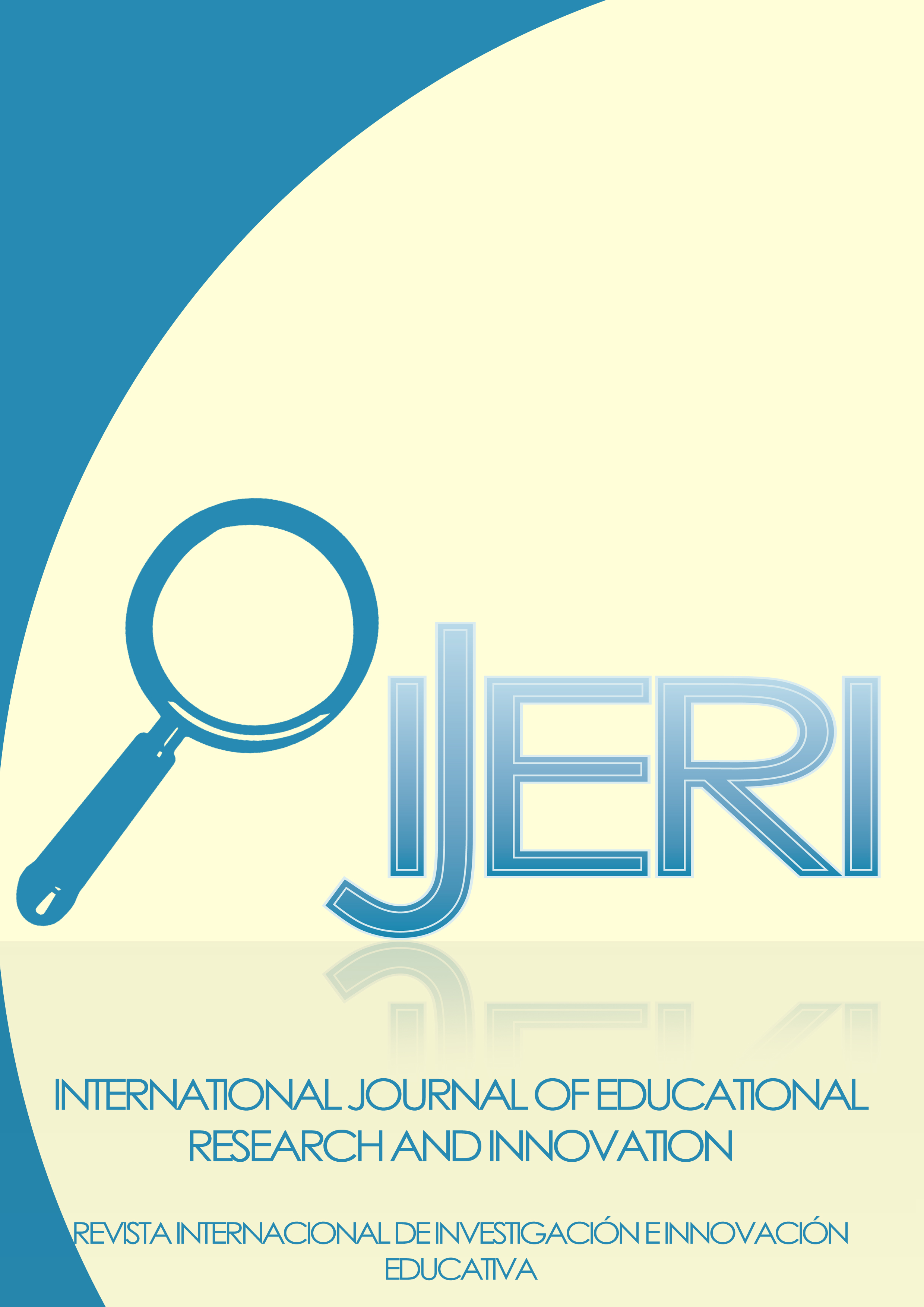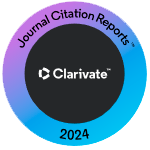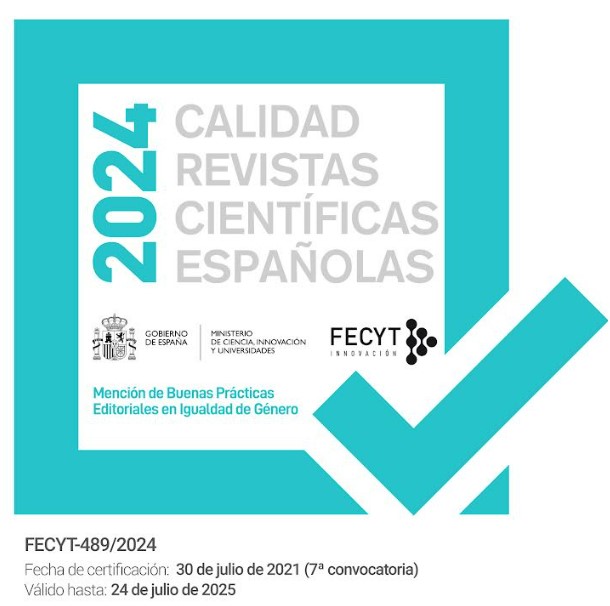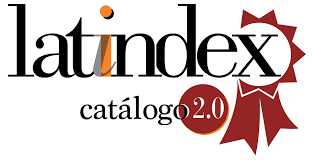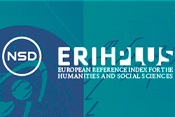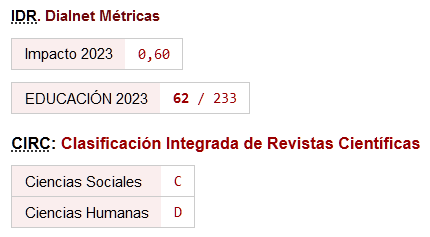Un Entorno gamificado apoyado en realidad aumentada para potenciar la competencia comunicativa en alumnado con TEA: diseño y validación
DOI:
https://doi.org/10.46661/ijeri.6820Palabras clave:
Trastorno del Espectro Autista, entorno virtual, gamificación, realidad aumentada, competencia comunicativaResumen
Este estudio tiene como objetivo diseñar y validar un Entorno Gamificado Aumentado (EGA) para potenciar la competencia comunicativa del alumnado con TEA. La metodología es mixta: a) cualitativa, centrada en el estudio de caso único para describir el proceso del diseño del EGA. El entorno parte de una narrativa de aventura pirata que integra actividades gamificadas apoyadas en realidad aumentada. Se potencia un aprendizaje inmersivo mediante actividades que impulsan las habilidades sociales, lingüísticas y cognitivas ligadas al juego simbólico. Y b) cuantitativa, apoyada en el método Delphi, donde expertos (N=12) evalúan el entorno utilizando 14 indicadores asociados a 4 dimensiones: adaptabilidad a los ritmos de aprendizaje, idoneidad del soporte y códigos para presentar el contenido, potencialidad didáctica para el desarrollo competencial y adecuación del proceso de gamificación al alumnado con TEA. Finalmente, las valoraciones expertas contribuyeron al refinado del EGA, incrementando su adaptabilidad, flexibilidad y funcionalidad, incorporando actividades versátiles y aplicaciones de realidad aumentada que propician el desarrollo lingüístico y socio-emocional del alumnado de forma lúdica en un entorno inmersivo.
Descargas
Citas
Adnan, N.H., Ahmad, D. & Abdullasim, N. (2018). Systematic Review on Augmented Reality Application for Autism Children. Journal of Advanced Research in Dynamical & Control Systems, 10(11), 26-32. https://bit.ly/37cr21x
Alharbi, M. & Huang, S. (2020). An Augmentative System with Facial and Emotion Recognition for Improving Social Skills of Children with Autism Spectrum Disorders. In 2020 IEEE International Systems Conference (SysCon) (pp. 1-6). IEEE. http://doi.org/10.1109/SysCon47679.2020.9275659
American Psychiatric Association (2013). Diagnostic and Statistical Manual of Mental Disorders (DSM-5). American Psychiatric Association. https://doi.org/10.1176/appi.books.9780890425596
Arief, M. & Efendi, M. (2018). The book of pop up augmented reality to increase focus and object recognition capabilities for children with autism. Journal of International Conference on Special Education in Southeast Asia Region (ICSAR), 2(1), 9-14. http://dx.doi.org/10.17977/um005v2i12018p009
Arzone, C., Mottan, K., & Saad, K.M. (2020, July). The Relationship between Gamification and Emotional Intelligence among Children with Autism Spectrum Disorder. In International Conference on Special Education In South East Asia Region 10th Series 2020 (pp. 424-433). Redwhite Press. https://series.gci.or.id/article/320/15/icsar-2020-2020
Aspiranti, K., Larwin, K., Schade, L, & Schade, B. (2018). iPads/tablets and students with autism: a meta-analysis of academic effects. Assistive Technology: the Official Journal of RESNA, 32(1), 23-30. https://doi.org/10.1080/10400435.2018.1463575
Baixaulli, I., Roselló, B., Berenguer, C., Colomer, C. & Grau, M. (2017). Intervenciones para promover la comunicación social en niños con trastorno del espectro autista. Revista de Neurología, 64, 39-44. https://doi.org/10.33588/rn.64S01.2017013
Barroso, J.M. & Cabero, J. (2013). La utilización del juicio de experto para la evaluación de TIC: el coeficiente de competencia experta. Bordón. Revista de Pedagogía, 65(2), 25-38. http://doi.org/10.13042/brp.2013.65202
Ben-Sasson, A., Lamash, L. & Gale, E. (2012). To enforce or not to enforce? The use of collaborative interfaces to promote social skills in children with high functioning autism spectrum disorder. Autism, 17, 608-622. https://doi.org/10.1177/1362361312451526
Cabrera, J. D. (2020). La retroalimentación para mejorar el proceso de aprendizaje en el estudiante. Revista Universitaria de Informática RUNIN, 7(10), 70-75. https://doi.org/10.22267/runin
Carrington, S., Saggers, B., Webster, A., Harper-Hill, K., & Nickerson, J. (2020). What Universal Design for Learning principles, guidelines, and checkpoints are evident in educators’ descriptions of their practice when supporting students on the autism spectrum?. International Journal of Educational Research, 102, 101583. https://doi.org/10.1016/j.ijer.2020.101583
Chen, C.H., Lee, I.J. & Lin, L.Y. (2016). Augmented reality-based video-modeling storybook of nonverbal facial cues for children with autism spectrum disorder to improve their perceptions and judgments of facial expressions and emotions. Computers in Human Behavior, 55, 477-485. https://doi.org/10.1016/j.chb.2015.09.033
Chung, C.H. & Chen, C.H. (2017). Augmented reality based social stories training system for promoting the social skills of children with autism. Advances in Ergonomics Modeling, Usability & Special Populations, 486, 495-505. https://doi.org/10.1007/978-3-319-41685-4_44
Del Moral, M.E. & López-Bouzas, N. (2021). Entornos gamificados aumentados para Educación Primaria: claves para su diseño [Sensitive gamified environments for Primary Education: keys for its design] In J.M., Romero, M., Ramos, C. Rodríguez, & J.M., Sola (coords.). Escenarios educativos investigadores: hacia una educación sostenible, (pp. 1233-1243). Madrid: Dykinson.
Durán, S. (2021). Tecnologías para la enseñanza y el aprendizaje del alumnado con Trastorno del Espectro Autista: una revisión sistemática. Innoeduca. International Journal of Technology and Educational Innovation, 7(1), 107-121. https://doi.org/10.24310/innoeduca.2021.v7i1.9771
García-Guillén, S., Garrote, D. & Jiménez-Fernández, S. (2016). Uso de las TIC en el Trastorno de Espectro Autista: aplicaciones. EDMETIC, 5(2), 134-157. https://doi.org/10.21071/edmetic.v5i2.5780
Grande de Prado, M., García-Martín, S., Baelo, R. & Abella-García, V. (2021). Edu-Escape Rooms. Encyclopedia, 1(1), 12-19. http://doi.org/10.3390/encyclopedia1010004
Guisti, L., Zancanaro, M., Gal, E. & Weiss, P. L. (2011). Dimensions of Collaboration on a Tabletop Interface for Children with Autism Spectrum Disorder. En Proceedings of the SIGCHI Conference on Human Factors in Computing Systems, (pp. 3295- 3304). http://doi.org/10.1145/1978942.1979431
Kang, Y.S. & Chang, Y.J. (2019). Using game technology to teach six elementary school children with autism to take a shower independently. Developmental Neurorehabilitation, 22(5), 329-337. https://doi.org/10.1080/17518423.2018.1501778
Khowaja, K., Banire, B., Al-Thani, D., Tahri, M., Aqle, A. & Shah, A. (2020). Augmented Reality for Learning of Children and Adolescents With Autism Spectrum Disorder (ASD): A Systematic Review. IEEE, 8, 78779-78807. http://doi.org/10.1109/ACCESS.2020.2986608
Kolomoiets, T.H. & Kassim, D.A. (2018). Using the augmented reality to teach of global reading of preschoolers with autism spectrum disorders. In A. Kiv & V.Soloviev (Eds.). In Proceedings of the 1st International Workshop on Augmented Reality in Education. CEUR-WS, vol. 2257, (pp. 237-246). https://bit.ly/30PCRGL
https://doi.org/10.31812/123456789/2654
Kousar, S., Mehmood, N.Q. & Ahmed, S. (2019). Serious games for children with autism spectrum disorder (ASD): A comparative study. University of Sindh Journal of Information and Communication Technology, 3(3), 167–170. https://doi.org/10.1007/s10209-019-00689-4
Lee, I.J., Lin, L.Y., Chen, C.H. & Chung, C.H. (2018). How to create suitable augmented reality application to teach social skills for children with ASD. State of the Art Virtual Reality and Augmented Reality Knowhow, 8, 119-138. http://doi.org/10.5772/intechopen.76476
Linstone, H. & Turoff, M. (1975). The Delphi Method: Techniques and applications. Addison-Wesley.
López-Bouzas, N., & Del Moral, M.E. (2022). Instrumento apoyado en aplicaciones digitales para diagnosticar la competencia comunicativa de alumnado con TEA: diseño y validación. Innoeduca. International Journal of Technology and Educational Innovation, 8(2), 83-96. https://doi.org/10.24310/innoeduca.
López-Gómez, E. (2018). El método Delphi en la investigación actual en educación: una revisión teórica y metodológica. Educación XX1, 21(1),17-40. https://doi.org/10.5944/educxx1.20169
López Meneses, E., & Fernández Cerero, J. (2020). Information and Communication Technologies and functional diversity: knowledge and training of teachers in Navarra. IJERI: International Journal of Educational Research and Innovation, 14, 59–75. https://doi.org/10.46661/ijeri.4407
Madariaga, C.J., Ortiz, G.M., Cruz, Y.B., & Leyva, J.J. (2016). Validación del Software Educativo Metodología de la Investigación y Estadística para su generalización en la docencia médica. Correo Científico Médico, 20(2), 225-236. http://scielo.sld.cu/pdf/ccm/v20n2/ccm02216.pdf
Malinverni, L., Mora, J., Padillo, V., Valero, L., Hervás, A., & Parés, N. (2017). An inclusive design approach for developing video games for children with autism spectrum disorder. Computers in Human Behavior, 71, 535-549. https://doi.org/10.1016/j.chb.2016.01.018
Marzo, M. & Belda, M. (2021). Trastornos del lenguaje en alumnado con TEA. IJNE: International Journal of New Education, 7, 57-74. https://doi.org/10.24310/IJNE4.1.2021.12016
Mubin, S.A., Poh, M.W.A., Rohizan, R., Abidin, A.Z., & Wei, W.C. (2020). Gamification Design Framework to Support Autism Children Interaction Skills: A Systematic. International Journal of Current Research and Review, 12(22), 120-125. http://dx.doi.org/10.31782/IJCRR.2020.122230
Ntalindwa, T., Nduwingoma, M., Karangwa, E., Soron, T.R., Uworwabayeho, A., & Uwineza, A. (2021). Development of a Mobile App to Improve Numeracy Skills of Children With Autism Spectrum Disorder: Participatory Design and Usability Study. JMIR pediatrics and parenting, 4(3), e21471. https://arxiv.org/abs/1801.03529
Parlamento Europeo y Consejo (2006). Recomendación 2006/962/CE de 18 de diciembre de 2006 del Parlamento Europeo y del Consejo sobre las competencias clave para el aprendizaje permanente. Diario Oficial L 394 de 30.12.2006.
Rodrigues da Silva, R.J., Gouveia, R. & Pereira, C.T. (2019). Gamification in management education: A systematic literature review. BAR-Brazilian Administration Review, 16(2), e180103. https://doi.org/10.1590/1807-7692bar2019180103
Sahin, N.T., Keshav, N.U., Salisbury, J.P. & Vahabzadeh, A. (2018). Safety and Lack of Negative Effects of Wearable Augmented-Reality Social Communication Aid for Children and Adults with Autism. Journal of Clinical Medicine, 7(188), 1-17. https://doi.org/10.3390/jcm7080188
Sánchez, M.C. (2021). Análisis y evaluación de aplicaciones para desarrollar la comunicación en el alumnado con trastorno del espectro autista. Revista Electrónica de Tecnología Educativa, 75, 168-187. https://doi.org/10.21556/edutec.2021.75.1681
Soares, K.P., Burlamaqui, A.M.F., Gonçalves, L.M.G., Da Costa, V.F., Cunha, M.E., & Da Silva Burlamaqui, A.A. (2017). Preliminary studies with augmented reality tool to help in psycho-pedagogical tasks with children belonging to autism spectrum disorder. IEEE Latin America Transactions, 15(10), 2017-2023. http://doi.org/10.1109/TLA.2017.8071250
Taryadi, D. & Kurniawan, I. (2018). The improvement of autism spectrum disorders on children communication ability with PECS method multimedia augmented reality-based. Journal of Physics: Conference Series, 47(1), 1-8. http://doi.org/10.1088/1742-6596/947/1/012009
Trejo, H. (2019). Technological resources for the integration of gamification in the classroom. Tecnología, Ciencia y Educación, 13, 75-117. http://doi.org/10.4018/jcit.2014100104
Van Dooren, M.M., Siriaraya, P., Visch, V., Spijkerman, R., & Bijkerk, L. (2019). Reflections on the design, implementation, and adoption of a gamified eHealth application in youth mental healthcare. Entertainment Computing, 31, 100305. https://doi.org/10.1016/j.entcom.2019.100305
Zichermann, G. & Cunningham, C. (2011). Gamification by Design: Implementing Game Mechanics in Web and Mobile Apps. O’Reilly Media.
Descargas
Publicado
Cómo citar
Número
Sección
Licencia
Derechos de autor 2023 Nerea López-Bouzas, M. Esther Del Moral Pérez

Esta obra está bajo una licencia internacional Creative Commons Atribución-NoComercial-SinDerivadas 4.0.

